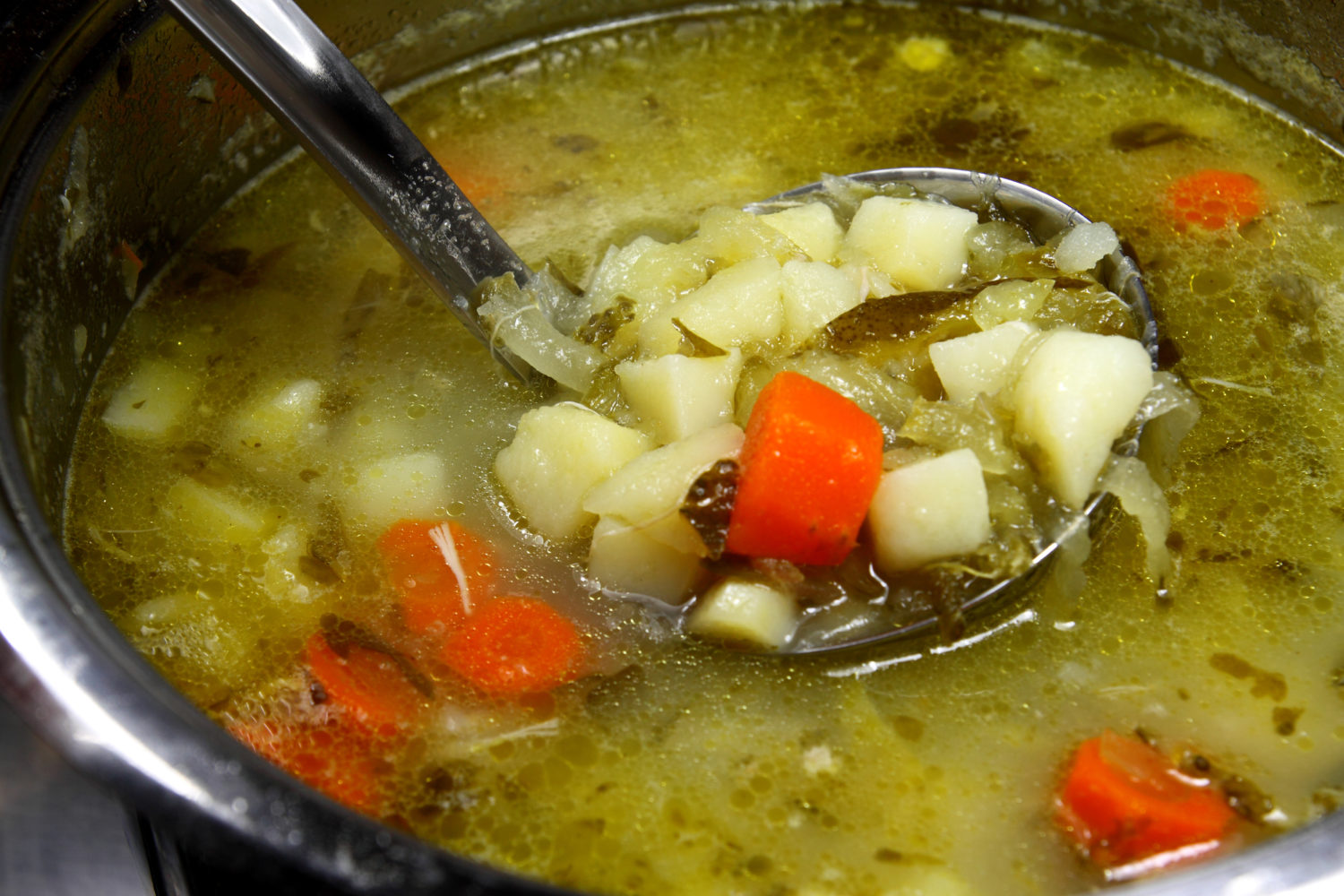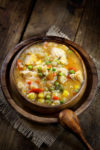
A Good Cook Never Wastes
“A GOOD COOK NEVER WASTES”
“It is her pride to make the most of everything in the shape of food entrusted to her care, and her pleasure to serve it in the most appetizing form. In no other way can she prove her excellence, for poor cooks are always wasteful and extravagant.
The day has passed for regarding cooking as a menial and vulgar labor; and those who give some thought to their daily food usually gain in vigor and cheerfulness.”
~~ Juliet Corson, 1877.
INFORMATION BELOW FROM 1800s COOKBOOKS
WASTEFULNESS
It is said that in American kitchens, half the provisions are spoiled and the other half wasted. There is no need today of being open to such accusations.
FUEL
Do not waste fuel; concentrate your cooking. When a hot oven is needed for roasting meat or baking bread, plan to cook at the same time other things which require a high temperature. Potatoes can be cooked in the pan with the meat, other vegetables and fruits can be cooked in the oven, and if a coal fire is used, a variety of food can be cooked in a steamer on top of the range without extra fuel. Have the ashes sifted and save the cinders, which yield a quick top heat.
BUTTER AND OTHER SHORTENING
To the taste of the average person, there is no real equivalent for the flavor of fine creamery butter, but for cooking, excellent results may be obtained by the use of cheaper shortening. All drippings from the roasts and fat from boiled meats should be carefully strained and saved.
Beef and chicken fat may be used in many recipes, including those for cookies, cakes, meat sauces, soups, and made dishes. Bacon fat is excellent for corn cake, meat sauces, and soups of peas, beans, or lentils. Sausage fat may be used for gingerbread, cookies, poultry stuffing, and also for frying potatoes and other vegetables. Both bacon and sausage fat and that from soup stock are useful for basting lean roasts, fish, or meat loaf.
Mutton, turkey, and smoked meat fat has too strong a flavor to be used for frying, but save it with other fat that may be unsuitable for frying, and when six pounds are collected, make it into kitchen soap.
BAKING
Make your own bread and cake. Some people think it is just as cheap to buy of the baker and confectioner. True, it is more convenient and therefore the rich are justifiable in employing them, but those who are under the necessity of being economical, should make convenience a secondary object.
As far as it is possible, have bits of bread eaten up before they become hard. Spread those that are not eaten, and let them dry, to be pounded for puddings, or soaked for brewis. Brewis is made of crusts and dry pieces of bread, soaked a good while in hot milk, mashed up, and salted, and buttered like toast.
Trim such pieces of cut bread as will do for toast into uniform shape and serve at the next breakfast. Smaller pieces cut into croutons for garnishing or for soup. Save unshapely pieces for bread pudding or stuffings. Save every scrap of bread for crumbs, to use for breading croquettes, chops, scallop dishes, etc. With proper care, there is no need of losing a particle of bread, even in the hottest weather.
THE STOCK POT
All trimmings and bones, both cooked and uncooked, and any left-over bits of meat or gravy that are not needed for other dishes, should be put into the stock pot. Use the carcasses of fowls and the bones from roasts for making soup. Almost any left-over vegetable can be added, including macaroni, rice, and the scrapings of the cereal cooker. The water in which vegetables, macaroni, rice, or any meats are cooked contains valuable mineral matter as well as flavor, and should be added wholly or in part to the stock pot.
Cover with cold water, and simmer (not boil) with soup vegetables and savory herbs for three or four hours. When soup stock is lacking in richness, a small amount of gelatin improves the quality.
=================================================
SAVE FOOD THAT MANY COOKS THROW AWAY
Stale cake can be made into puddings.
Save egg-shells to clear soup, jellies, or coffee.
Use boiled eggs that are left for garnishing to mix with salad. Cold poached eggs can be boiled hard and used in the same way.
Cold fried or scrambled eggs can be chopped and mixed with minced meat, and will much improve it.
When an egg is opened for the white alone, drop the yolk carefully into a cup, cover the cup with a wet cloth, and keep it in the ice-box until wanted.
Oatmeal, hominy, cracked wheat, and other cereals which are left over can be added next day to the fresh stock, for they are improved by long boiling and do not injure the new supply.
In warm weather, cereals are nicer cold than hot. Cut cold hominy and mush into squares and fry, so that a crisp crust is formed on both sides. Also hominy or farina, rolled into balls and fried, are good used in place of a vegetable or as a breakfast dish.
Any of the cereals make good pancakes, or a small amount added to the ordinary pancake batter improves it.
Cold rice can be added to soup, made into croquettes, used in a scallop dish, or mixed with minced meat and egg and fried like an omelet.
Peas, tomatoes, or beans can be put in an omelet.
The coarse stalks and roots of celery make a good vegetable dish when cut in pieces and boiled, or they make a good cream-of-celery soup. The leaves are valuable in the soup pot for flavor, and also are useful for garnishing.
Sour milk makes cottage cheese, or makes good biscuits.
Grate cheese which becomes dry and use for gratin dishes or soups.
Use a ham bone for improving bean soup.
Chop the tough ends of steak very fine, season, and form them into balls or cakes, sauté or broil them, and serve for breakfast or luncheon.
Cut pieces of white meat into dice or strips, mix it with a white sauce. Put into a flat dish, make a border of croutons, sprinkle over the top a little chopped parsley, and garnish with hard-boiled egg.
Mix dark meats of any kind with a brown sauce, and garnish with lettuce leaves, hard-boiled eggs, and croutons.
Any kind of cold meat may be chopped and used in an omelet, or combined with rice and tomatoes for a scallop.
Image from Deposit Photos
=================================================

 Vintage Cooking from the 1800s – HINTS
Vintage Cooking from the 1800s – HINTS
STEP BACK IN TIME to the 1800s …. and imagine how difficult it was to prepare and cook food before gas and electricity was available.
Advice and cooking hints were sometimes included at the end of cookbooks and greatly appreciated.
Hints include:
- keeping milk sweet
- keeping weevils out of wheat
- keeping meats, fish and poultry fresh in hot weather
- removing insects from vegetables being washed
- taking the white of an egg for a sour stomach
- and many, many more….
Available from these online Retailers:
Amazon, Kobo, Apple, Barnes&Noble, Scribd, 24 Symbols, Playster, Angues & Robertson, Mondadori Store, and more
Also available as Regular Print and Large Print
on Amazon.
=================================================
Do You Try Not to Waste Food? Please Leave a Comment Below
=================================================

4 thoughts on “A Good Cook Never Wastes”
I have a big old enamel pot that has been on the stove for the last 14 years (in this house); I’m not even sure if I ‘could’ take it off at this stage. haha. All my scraps go into it to make stock; vegetable peelings, chicken carcasses, old bones, meat scraps, you name it and it has probably gone in my stock pot at some time or another.
I will use the stock straight from the pot as I need it but also every few days I ladle out all the broth and top the pot up with clean water and when I have quite a few scraps collected in the refrigerator I spoon all the old scraps out of the pot and start adding the new ones.
The stock or broth I take out I put in the refrigerator or I freeze it. If I only refrigerate it I do bring it to a boil on the stove every day just to keep it ‘sweet’.
Everything that needs water gets my own stock; it is really good for cooking potatoes and other veggies and then goes back in the refrigerator to be used again.
You’re doing what the old cookbooks say to do – don’t waste a single scrap. And the food is real food – healthy and unprocessed.
Some ideas here are new to me (even though old ones). We can learn a lot from our ancestors.
I’ve always loved reading helpful hints; modern and older. I never missed reading the “Hints from Heloise” column in the newspaper and now read hints from all eras.